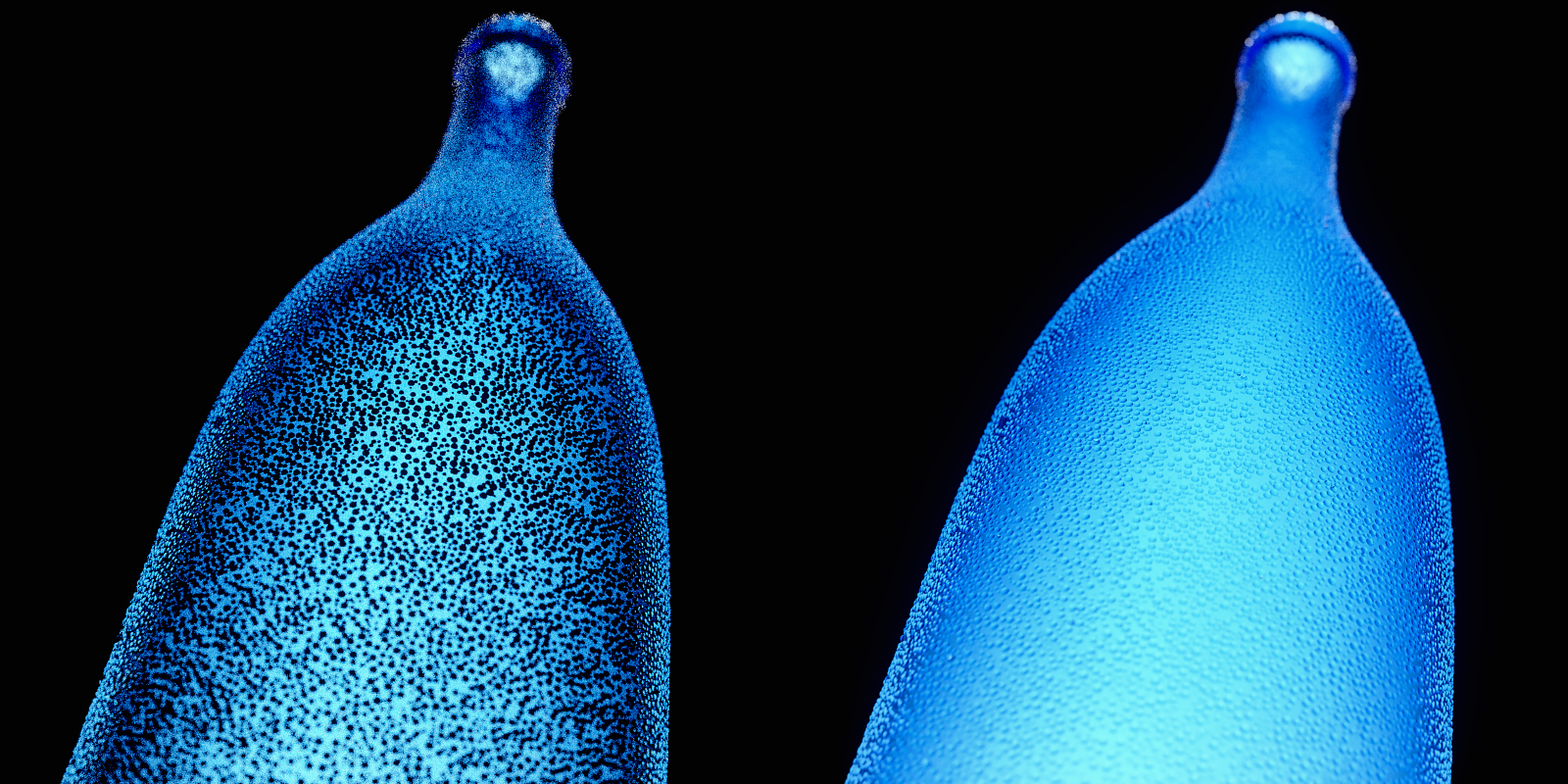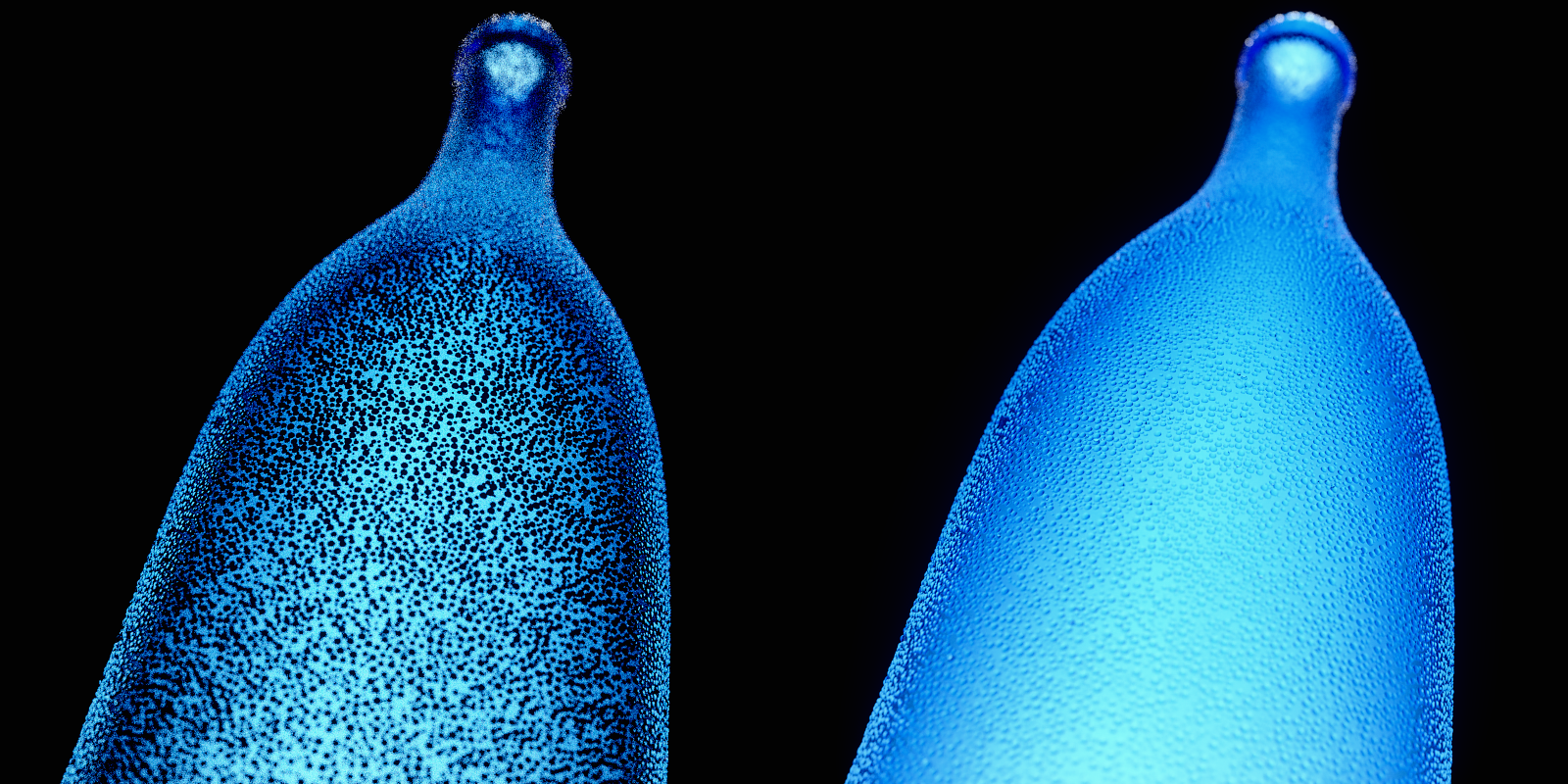...
Modeling the glass and liquid bodies with coinciding faces produces precision errors in the coinciding walls
Preview image by Xpert Mihai of www.maxwellzone.com
...
In render time, the overlapping liquid volume gets automatically removed, leaving one single face and the materials properly assigned with respect to each ray direction (right)
What if we add some ice cubes?
If we want to throw some ice cubes into the liquid, we will end up with the a similar situation: inside the ice cubes' volume there exists at first two different materials coexisting (liquid and ice), which is not what would happen in the real world, where only ice fills that space. In this case we need to assign a higher priority (lower value) to the ice and a lower priority (higher value) to the liquid.
...
Values are set to establish the proper order when they overlap (the material with lower priority value remains) but the numerical value itself is irrelevant (setting 0 and 1 for two dielectric materials produces the same result as setting them to 7 and 11).
Using Nested Dielectrics to make cavities or bubbles
If you use the Nested Dielectrics feature with a material that simulates air, you will find it very easy to create bubbles or cavities into other objects. The idea behind this is generating a very transparent material and set it before in the nested priority queue (lower number) than the main object (higher nested priority number).
...

